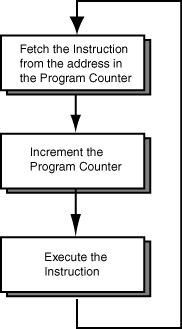Answer:
No. The two machines are very different.
No. The two machines are very different.

There is not just one language called "assembly language." Each processor family (such as Intel, VAX, MIPS, Alpha, ...) has its own machine instructions and a corresponding assembly language. MIPS assembly language is only for MIPS processors. The VAX assembly language is only for VAX processors. There is a different assembly language for IBM mainframe computers, and others for Intel-based PCs.
All processors follow the same basic machine cycle. (See above). The differences between processors are in the details of what operations are done in the "execute" phase of the basic machine cycle.
Assembly language describes computations in terms of the hardware of a particular processor. A high level computer programming language (ideally) describes computations in terms of the problem being solved . Since there are many types problems, there are many high level languages, each designed for particular types of problems. For example, object-oriented languages, describe computations in terms of the objects of the problem and operations with them.
It is much easier to program a computer in a high level language than in assembly language, especially when the programming language matches the problem. There will never be a universal programming language since no one language is best for all problems.
(Hard thought question:) What type of problem is assembly language best suited for?